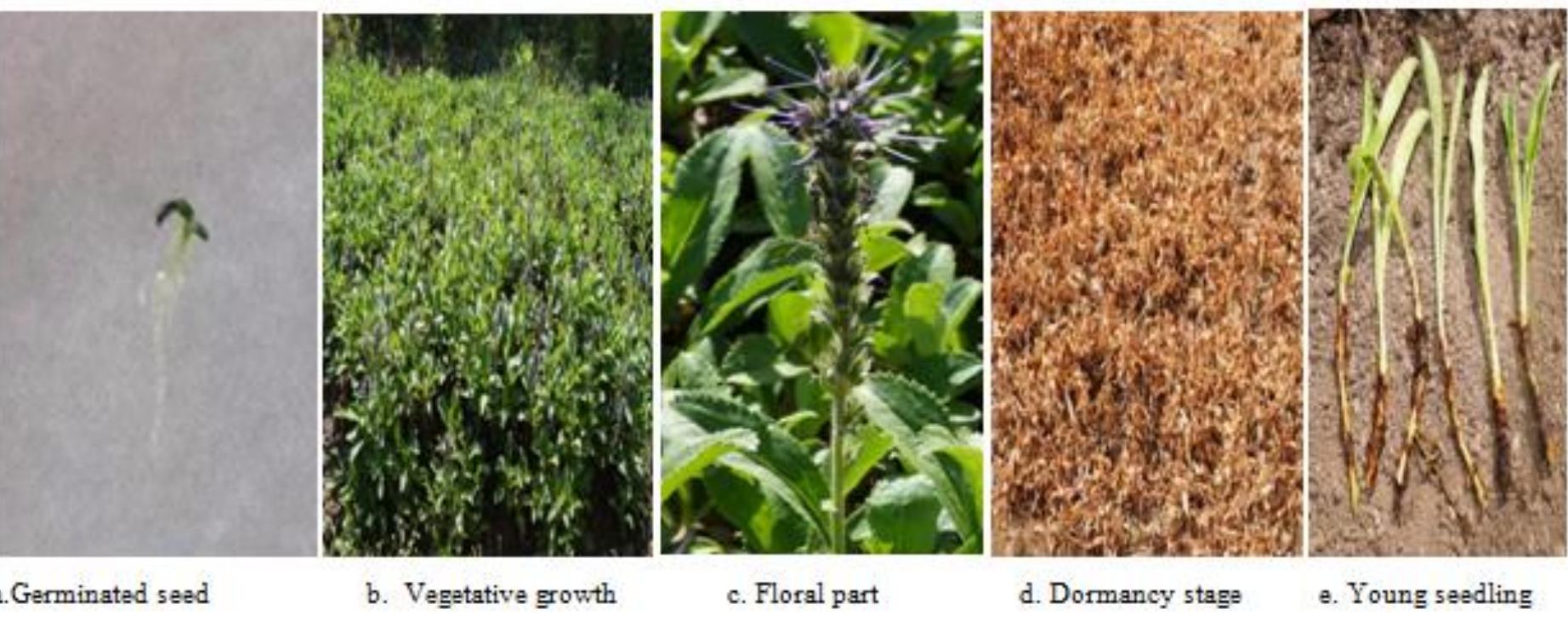Phenological Studies of High Value Endangered Medicinal Herbs: Picrorhiza kurroa and Saussurea costus in Sub-alpine Regions of Garhwal Hiamalya, Uttarakhand India (original) (raw)
Abstract
In nature it is often seen that each species has a definite period, month, season in a year during which its seeds germinate, seedlings grow or show maximum vegetative growth, leaves fall (if it is deciduous), flushing of new leaves, flowering and then fruiting. The study of all these periodic behaviour of a species is called its phenology. In the life cycle of a plant each and every stage is greatly influenced by a number of environmental factors. The different stages of the plant species remain completely embedded in an environmental complex. It is very interesting to note that being fixed at a particular place, the requirement of germination, growth, flowering, fruiting, leaf fall, etc. of the species are met with at the same place but of course in different times of the year. There is a synchronization of phenological behaviour of the species and the various factors of the environment that plants are spoken of biological clocks. This is mostly regulated by external signals from the environment. But the interactions of each and every species are different at different stages of their life cycle. Thus plant phenological study has great significance because it not only provides knowledge about the plant growth pattern but it also provides the idea on the effect of environment and selective pressure on flowering and fruiting behavior (Zhang et al 2006). 1.1. About Picrorhiza kurroa Picrorhiza kurroa Royle ex Benth. (Family: Scrophulariaceae) native to Western Himalayan region, between 3000-5000m elevation (Hooker 1885; Agrawal 2003) is valued as hepato-protective, antiperiodic, cholagouge, and stomachic, antiamoebic, anti-oxidant expectorant, etc. (Singh et al 2006). The rhizome of Picrorhiza has been traditionally used to treat worms, constipation, low fever, scorpion sting, asthma and ailments affecting the liver. Picrorhiza kurroa also known as kutki is found in the NorthWestern Himalayan region from Kashmir to Kumaun and Garhwal regions in India. Kutkin is the active principal of Picrorhiza kurroa and is comprised of kutkoside and the iridoid glycoside picrosides I, II, and III. Other identified active constituents are apocynin, drosin, and nine cucurbitacin glycosides (Stuppner and Wagner 1989). Apocynin is a catechol that has been shown to
Figures (5)
Figl. Meteorological data of the study area In general, the climate of the Bharsar represents mild summer, higher precipitation and prolonged cold winter season. The climatic factors such as precipitation, temperature, relative humidity and wind, in association with elevation, slope aspects, drainage, vegetation, etc. are responsible for the micro-climate of this area. Generally, days of Bharsar are fairly warm followed by cool nights. The area receives adequate sunshine hours whereas the growing period is shorter due to long winter. The area also receives heavy precipitation during monsoon and occasional snow fall during winter season. The mean monthly weather data for one year is presented in Figure 1.
Table2.Calendar for reproductive phase in Saussurea costus Tablel.Calendar for reproductive phase in P. kurroa
The phenology and growth of the plants changes with the increase in altitude due to alteration in assimilate investment patterns and metabolism, thereby affecting their growth (Korner and Renhard 1987). Low temperature and high light intensity at higher altitudes are responsible for small height of plants besides having small leaves with thicker lamina. Low temperature at high altitudes also results in low growth rate in alpine plants species by reducing rate of nitrogen mineralization in soil and uptake of nitrate by plants (Bowman et al 1995; Seastedt et al 2001). Leaf area, respiration rate,
Figl. Picrorhiza kurroa: Different phenolphage Every step should be taken to conserve the medicinal or other plant diversity of the regions which is already in a critical level that can be justified by observing the present percentage of forest, inclusion of species in red data book or changed phenological behavior of the plant species.
REFERENCES Bisht A.S. (2005). Ecological studies of some important medicinal plant; their multiplication and conservation in Garhwal Himalaya, India. Ph.D thesis submitted HNB Garhwal University Srinagar (Garhwal).

Loading Preview
Sorry, preview is currently unavailable. You can download the paper by clicking the button above.




